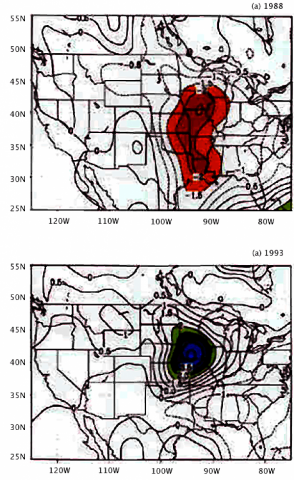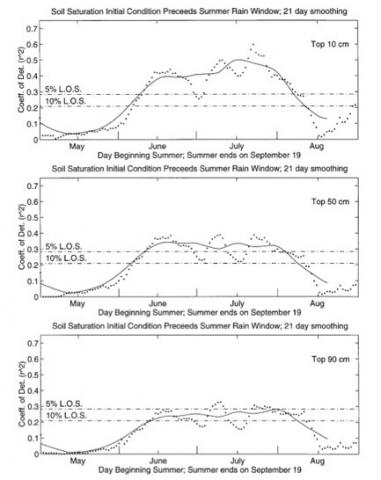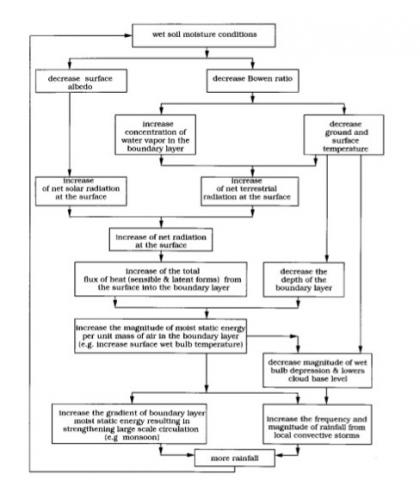Mechanisms for the Persistence of Summer Floods and Droughts over North America
The Midwest region of North America experiences significant floods and droughts during the summer season. The 1988 drought and the 1993 floods are good examples for these extreme events.
Summer Preciptation (May June and July) Anomalies (mm/day)
Findell and Eltahir (1997) analyzed direct observations on soil moisture and subsequent precipitation from Illinois. They suggest a significant role for spring and early summer soil moisture levels as initial conditions for the subsequent development of the hydroclimatologic conditions during summer.
Correlation between initial soil in the rest of the summer (through September 19) for (a) top 10 cm, (b) top 50 cm, (c) top 90 cm. Solid line is the 21-day moving average. Level of significance lines refer to the daily values (not the smoothed line).
Eltahir (1998) proposed the following mechanism for describing the implied soil moisture-rainfall feedback.
The proposed hypothesis for relating soil moisture conditions and subsequent rainfall processes.
This theoretical mechanism has been tested in (Eltahir, 1998) using field data from FIFE. Some of the ongoing research focuses on regional climate modeling of North America with the objective of studying the role of the large-scale spring soil moisture distribution in shaping summer climate.



